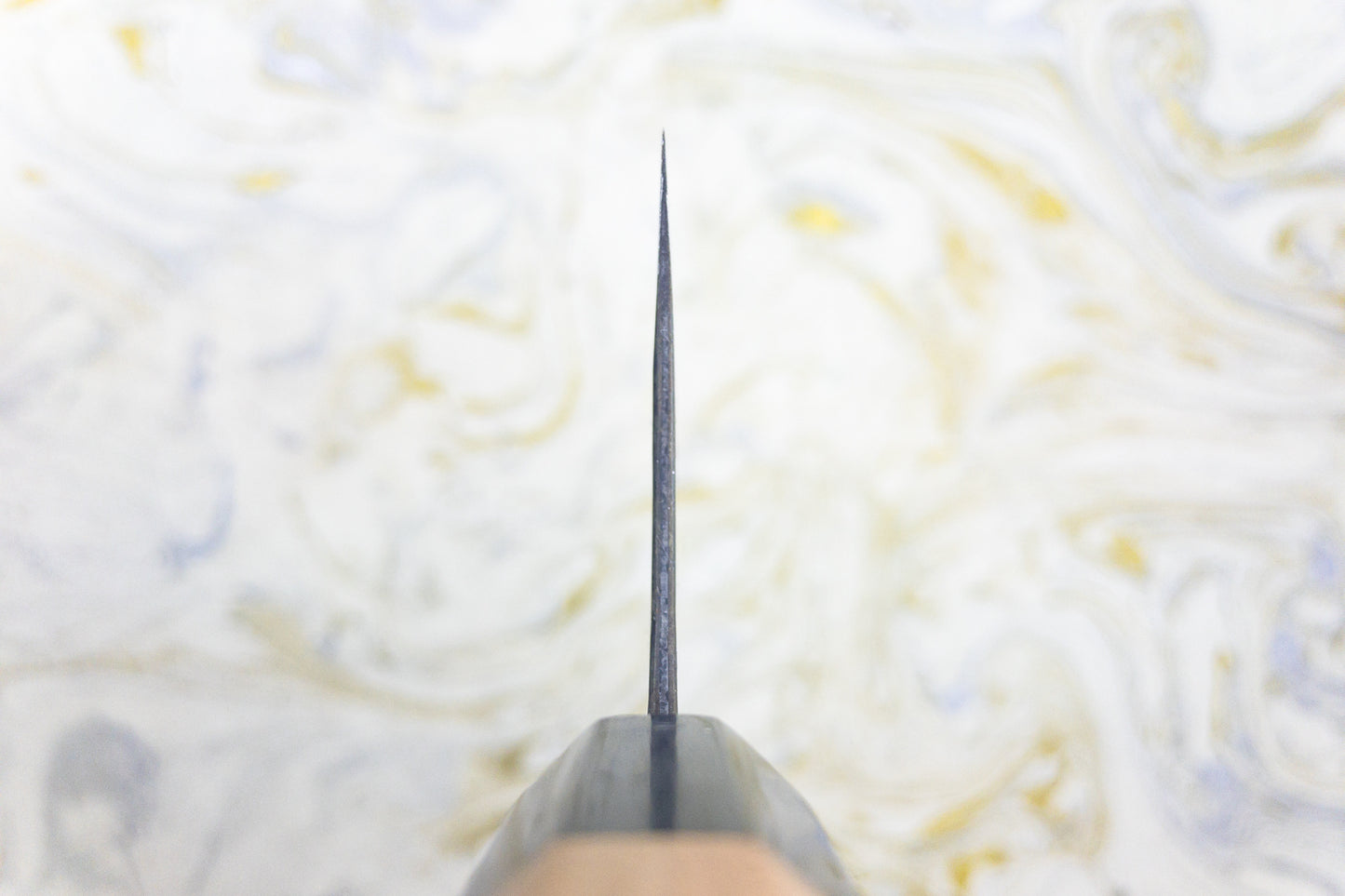Masakage Koishi AS Nakiri 165mm
Masakage Koishi AS Nakiri 165mm
Couldn't load pickup availability
About Masakage Koishi - These blades are thin and lightweight but substantial enough to fly through vegetables with ease. I love how most of the weight is focused on the business end of the knife, which is made from some truly remarkable steel. Kato-san forged this knife from Aogami Super, which gets shockingly sharp and keeps an edge for longer than most. The undisputed king of knife steel in my opinion.
The ‘tsuchime’ (meaning ‘hammered’) and ‘kurouchi’ (meaning ‘black hammered’) finish gives the impression of river pebbles, inspiring the name Koishi (meaning ‘small rocks’). A true culinary badass, like Jason Momoa in kitchen knife form.
Yoshimi Kato is the son-in-law and successor of Hiroshi Kato, one of the founders of Takefu Knife Village. The transition from apprentice to master blacksmith and company head has been seamless for Yoshimi-san. He tells me that he strives to continuously improve his skill day-by-day, and I look forward to working with the next generation of Kato for decades to come!
Yoshimi-san is a quiet man, calmly pushing forward at a steady pace and speaking more through his knives than his words. And boy, do they speak! Yoshimi-san’s knives are among the most gorgeous, laser-like blades I’ve ever handled.
About the Shape - A Nakiri is a vegetable knife. Under utilized in the Western kitchen, the Nakiri’s flat blade is meant for the push/pull chopping of vegetables. Since the entire flat edge of the knife kisses the cutting board at once, you wont be turning the vegetable into an accordion. Accordion vegetables are still connected like a paper doll after you're “done” cutting them. To truly understand the awesomeness of a Nakiri we recommend making onion soup your first night with the knife. The ease of chopping will blow you away.
| Shape | Nakiri |
|---|---|
| Blade Length | | |
| Blade Height | |
| Blade Thickness Above Heel | |
| Weight | |
| Steel Type |
Rust Prone ⓘ
This knife can rust, click to learn more.
|
| Rockwell Hardness | 63 - 64 |
| Edge/Bevel | |
| Handle | Wa (Japanese) Handle - Octagon Cherrywood Black Pakkawood Collar |
| Knifeline | Masakage Koishi AS |
| Blacksmith | Yoshimi Kato |
| Made in | Echizen, Fukui, Japan |
| Brand | Masakage |
A note about measurements: Handmade Japanese knives can vary in their dimensions, so these measurements are only an example.
Knife Care
Knife Care
Shipping and Returns
Shipping and Returns
We aim to ship your order within 1 business day at Knifewear, if there is a hold up, we'll aim to let you know and give you a timeline.
We offer $3 shipping on orders over $100* anywhere in Canada and $200* to customers in the USA. We ship worldwide, and offer up to the minute rates from our shipping partner DHL.
*Konro Grills and some other larger items are excluded from the free shipping offer.
How do I make a return on an online order?
No worries, we've got you sorted. Head over to https://knifewear.com/returns and follow the prompts.
Can I pick up my order Curbside / At the store?
Absolutely, as long as all the items you are looking for are in stock at the location you want to pickup from, you'll be able to select that at the checkout. If one or more items aren't at your preferred location we are happy to ship it to you.
Request Additional Info
Request Additional Info






